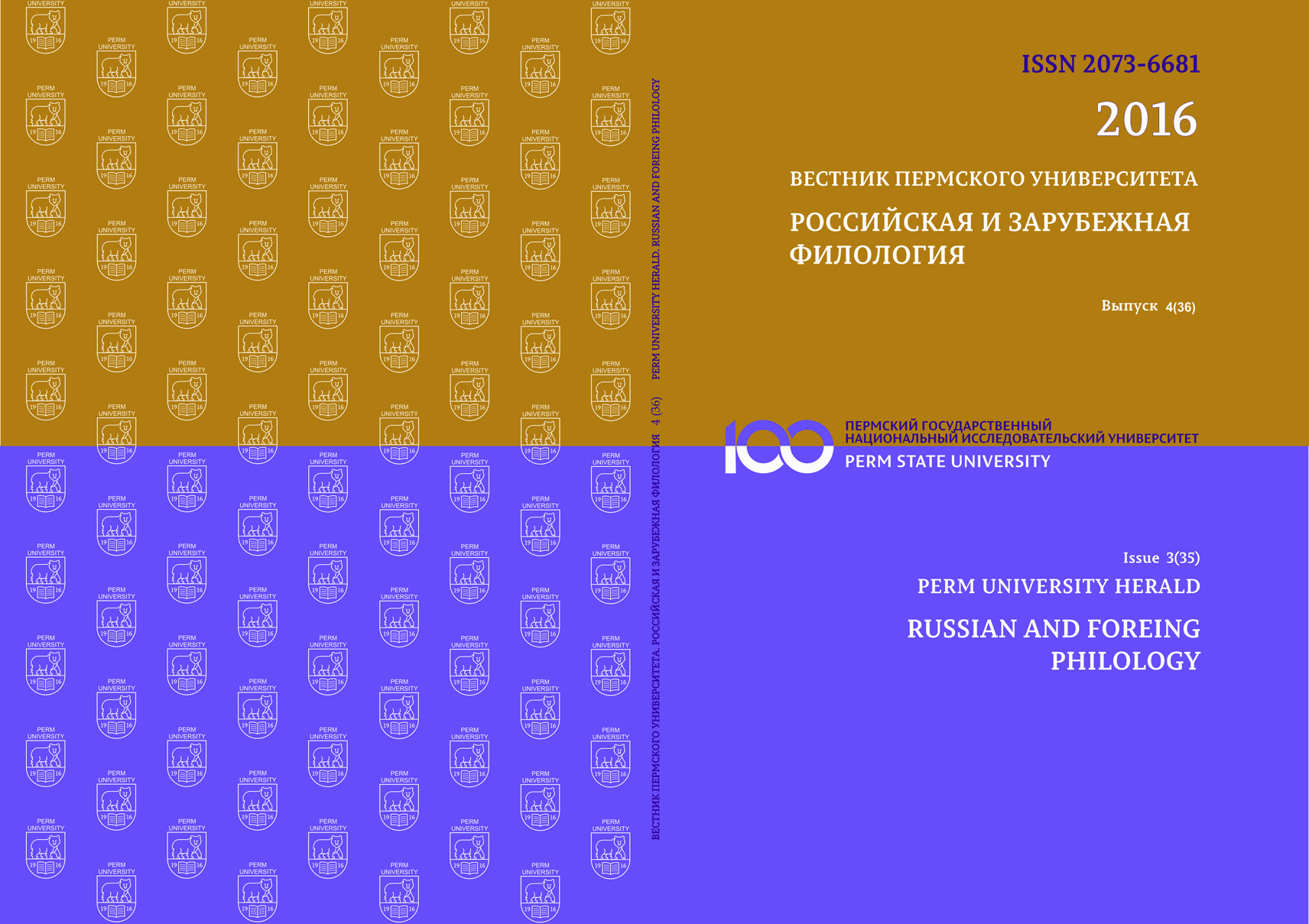LINGUISTIC PARAMETERS OF THE CONCEPTS LIST AND CATALOG: LANGUAGE PROCESSING VERSION FOR COMPUTER SYSTEMS
DOI:
https://doi.org/10.17072/2037-6681-2016-4-75-82Keywords:
computational linguistics, logistic regression, comparative analysis, semantics, near-synonymous concepts.Abstract
In this case study we present two near-synonymous concepts which reflect the human outlook. The aim of this work is to define the most appropriate one for its usage in the further investigations on semantics of ordering and enumerative units. Being unconscious and objective, these units exist irrespectively of the observer and can be defined by distinctions and oppositions. From this point of view we get LIST and CATALOG as near-synonymous words seeking to identify the factors that determine the choice of a concept by objective and semantic criteria. For this purpose we elaborate an outline of multiple logistic regression analysis. The focus of investigation is on the identification of the contents and dynamics of the concepts verbalized by LIST and CATALOG across (1) four registers of the language (academic, spoken, fiction, newspaper), (2) semantic feature of possessive meaning, (3) plural modification, (4) post-modification, (5) pre-modification and (6) genitive meaning.References
Barker Ch. Possessive Descriptions. Stanford: CSLI Publications, 1995. 194 p.
Beaver D. Presupposition and Assertion in Dynamic Semantics. Stanford: CSLI Publications, 2001. 305 p.
Biber D., Conrad S., Leech G. Longman Grammar of Spoken and Written English. Pearson, 2002. 1204 p.
Charles W. G. Contextual Correlates of Meaning // Applied Psycholinguistics/ 2000. № 21(4). P. 505–524.
Collins – Collins English Dictionary / Ed. by London: Harper Collins, 1994. 1791 p.
Collins – The New Collins Thesaurus / Ed. by William T. McLeod, London: Collins, 2002. 759 p.
Church K. W., Gale W., Hanks P., Hindle D., Moon R. Lexical Substitutability // B. T. S. Atkins and A. Zampolli. Computational Approaches to the Lexicon. Oxford University Press, 1994. P. 153–177.
Davies M. The Corpus of Contemporary American English (COCA): 425 million words, 1990. URL: http://www.americancorpus.org (дата обращения: 11.06.2016).
Eco U. The infinity of lists. Pub: New York: Rizzoli, 2009. 408 p.
Farlex – Free Farlex Online Thesaurus of synonyms, antonyms, and related words. URL: http://
www.thefreedictionary.com/list (дата обращения: 09.06.2016).
Fillmore Ch. “The Case for Case”, In Universals in Linguistic Theory / Ed. by Emmon Bach and Robert T. Harms. New York: Holt, 1968. P. 49–50.
Gilquin G. Causative ‘get’ and ‘have’: So close, so different // Journal of English Linguistics. 2003. № 31(2). P. 125–148.
Glynn D. Mapping meaning. Towards a usage-based methodology in Cognitive Semantics. (Un-published doctoral dissertation). University of Leuven, 2007. 163 p.
Gries S. Th. A corpus-linguistic analysis of -ic and -ical adjectives // ICAME Journal. 2001. № 25. P. 65–108.
Gries S. Th. & Otani N. Behavioral profiles: A corpus-based perspective on synonymy and antonymy // ICAME Journal. 2010. № 34. P. 121–150.
Halliday M. A. K. Spoken and written modes of meaning / ed. by Rosalind Horowitz and S. Jay Samuels. Comprehending Oral and Written Lan-guage. New York: Academic Press, 1987. P. 55–82.
Hunston S. Corpora in applied linguistics. Cambridge: Cambridge University Press, 2002. 241 p.
Labov W. The recent history of some dialect markers on the island of Martha’s Vineyard Mass / ed. by L. M. Davis. Studies in Linguistics in Honor of Raven I. McDavid Jr. University, Alabama Press. with Malcah Yaeger & Richard Steiner. A Quantitative Study of Sound Change in Progress. Philadelphia: U. S. Regional Survey, 1972. P. 1–31.
Levshina N., Geeraerts D., Speelman D. Dutch causative constructions with doen and laten: Quantification of meaning and meaning of quantification / ed. by D. Glynn & J. Robinson. Corpus Methods for Semantics: Quantitative studies in polysemy and synonymy. Amsterdam: John Benjamins, 2014. P. 377–414.
Longman – Longman Dictionary of Contemporary English. Fifth edition / Ed.: Harlow, Pearson, 2009. 2081 p.
Lyons J. Introduction to Theoretical Lingusitics. Cambridge University Press, 1968. P. 394–395.
Miller G. A., Walter G. Ch. Contextual correlates of semantic similarity. Language and Cognitive Processes. 1991. № 6(1). P. 1–28.
Peters S. The Semantics of Possessives. Stanford University Press, 2013. 64 p.
Phoocharoensil S. A. Corpus-Based Study of English Synonyms. International Journal of Arts and Sciences. 2010. № 3(10). P. 227–245.
Webster – Random house Webster’s college dictionary. Ed.: New York: Random House, 1996. 1567 p.
Shumaker W. The Semantics of the English’s Genitive // American Speech. Vol. 50. № 1/2 Spring – Summer. Duke University Press Stable. 1975. P. 70–86.
Speelman D. Logistic regression: A confirmatory technique for comparisons in corpus linguistics. // Ed. by Glynn D. and Robinson J. Corpus Methods in Cognitive Semantics, Amsterdam: John Benjamins, 2012. P. 181–231.
The New Shorter Oxford English Dictionary on Historical Principles: in 2 vols. / Ed. By Brown L., Little W., Onions C. T. George Washington Salisbury Friedrichsen, Vol. 1 A–M; Vol. 2 N–Z, Oxford: Clarendon, 1993. 3801 p.
Varantola K. On Noun Phrase Structures in Engineering English, Annales Universitatis Turkuensis, Ser. B, Tom. 168), Edité par Turun Ylopisto Turku, 1984. 252 p.




